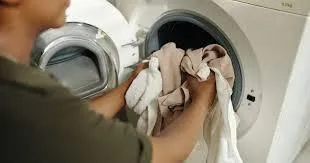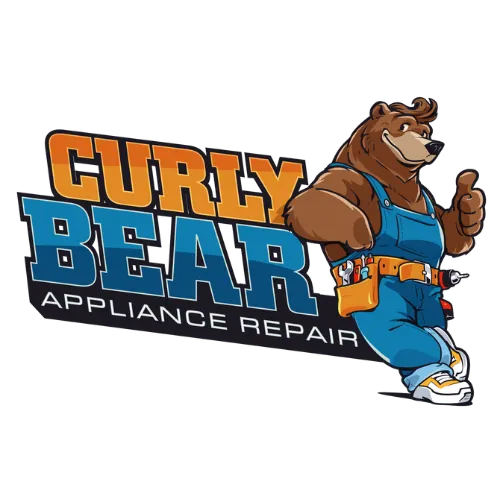
Trusted By Over 1000+ Local Homeowners

Why Your Washing Machine Isn’t Spinning: Common Issues and Fixes
Why Your Washing Machine Isn’t Spinning: Common Issues and Fixes
A washing machine that refuses to spin can be frustrating, especially when you have a pile of laundry waiting to be cleaned. If you've ever faced this problem, you're not alone! Many homeowners experience this issue at some point. But why does it happen, and what can you do about it? In this guide, we’ll explore the common causes behind a non-spinning washing machine and how to fix them.
Why is My Washing Machine Not Spinning?
Your washing machine might not be spinning due to several possible reasons. It could be something simple like an unbalanced load or a more complex issue like a broken motor. Understanding the root cause will help you determine whether you can fix it yourself or need professional help from a trusted service provider like Curly Bear Appliance Repair.
Is My Load Too Heavy or Unbalanced?
One of the most common reasons a washing machine doesn’t spin is an unbalanced load. When too many heavy items, such as towels or blankets, are clumped together on one side of the drum, the machine may shut off or fail to spin properly.
How to Fix It:
Stop the cycle and open the lid.
Redistribute the laundry evenly inside the drum.
Remove some items if the machine is overloaded.
Restart the cycle and check if the issue persists.
Could the Lid Switch Be Faulty?
Most top-loading washing machines have a lid switch that prevents the washer from spinning if the lid is open. If the switch is faulty or misaligned, your washer might think the lid is open even when it’s closed.
How to Fix It:
Open and close the lid firmly to see if the washer starts spinning.
Check for any visible damage or misalignment on the switch.
If the switch is broken, consider replacing it or calling Curly Bear Appliance Repair for professional assistance.
Is There a Problem with the Drive Belt?
The drive belt is responsible for spinning the drum. Over time, it can wear out, loosen, or even break, preventing the washer from spinning properly.
How to Fix It:
Unplug the washing machine and remove the back panel.
Inspect the belt for wear, cracks, or looseness.
If it’s loose, try tightening it; if it’s broken, replace it with a new one.
If you're unsure how to replace it, a technician from Curly Bear Appliance Repair can help.
Is the Motor Coupling Damaged?
The motor coupling connects the washer’s motor to the transmission. If it wears out or breaks, the washer may not spin at all.
How to Fix It:
Unplug the washer and access the motor area (usually at the back or bottom of the machine).
Look for a plastic or rubber coupling that connects the motor to the drum.
If it’s broken, replace it with a compatible part.
If the replacement seems complex, a professional repair service is the best option.
Could the Lid Lock Be Malfunctioning?
Many modern washing machines have a lid lock mechanism that prevents the washer from spinning when the lid is open. If this lock is faulty, the machine may not spin even when the lid is closed.
How to Fix It:
Inspect the lid lock for any visible damage.
Try cleaning it to remove dirt or lint buildup.
If the lock is broken, consider replacing it.
Is There a Clogged Drain Pump?
A washing machine that won’t drain properly can also refuse to spin. If the drain pump is clogged with debris, water may not drain completely, causing the washer to stop mid-cycle.
How to Fix It:
Locate the drain pump (usually at the bottom of the washer).
Remove any visible debris, such as lint, small objects, or detergent residue.
Run a cycle to see if the issue is resolved.
If the pump is damaged, it may need to be replaced.
Could the Motor Be Failing?
If your washing machine’s motor is overheating or has stopped working, the drum will not spin. A failing motor often causes a humming noise or a burning smell.
How to Fix It:
Listen for unusual sounds coming from the machine.
If the motor is overheating, unplug the machine and let it cool down.
If the motor doesn’t start at all, it may need replacement.
Contact a professional like Curly Bear Appliance Repair for expert motor repairs.
What If the Control Board or Timer is Malfunctioning?
The control board and timer regulate the different cycles in your washer. If either of them malfunctions, the spin cycle might not activate.
How to Fix It:
Try resetting your washing machine by unplugging it for a few minutes.
Check for any error codes displayed on the panel.
If the issue persists, a professional technician may need to replace the faulty part.
Should I Call a Professional Repair Service?
If you've tried all these troubleshooting steps and your washer still won’t spin, it may be time to call an expert. Curly Bear Appliance Repair specializes in diagnosing and fixing washing machine problems quickly and efficiently. Attempting complex repairs yourself can sometimes cause more damage, leading to costly repairs down the line.
Frequently Asked Questions
How Can I Prevent My Washer from Stopping Mid-Cycle?
To prevent future issues, regularly clean your washer, avoid overloading it, and ensure the drum is balanced before starting a cycle.
Is It Worth Repairing an Old Washing Machine?
If your washer is over ten years old and frequently breaking down, replacing it might be more cost-effective than repairing it.
How Much Does It Cost to Fix a Non-Spinning Washer?
Repair costs depend on the issue. A simple belt replacement may cost around $50, while a motor replacement could be several hundred dollars. For an accurate estimate, contact Curly Bear Appliance Repair.
What Are Signs That My Washer is Failing?
Signs include excessive noise, failure to drain, spinning issues, and error codes on the control panel.
Conclusion
A washing machine that won’t spin can be a major inconvenience, but many common issues have simple fixes. Start by checking the load balance, lid switch, and drive belt. If the problem persists, it might be time to call a professional like Curly Bear Appliance Repair to diagnose and fix the issue. Regular maintenance and prompt repairs can help keep your washing machine running smoothly for years to come.

Facebook
Instagram